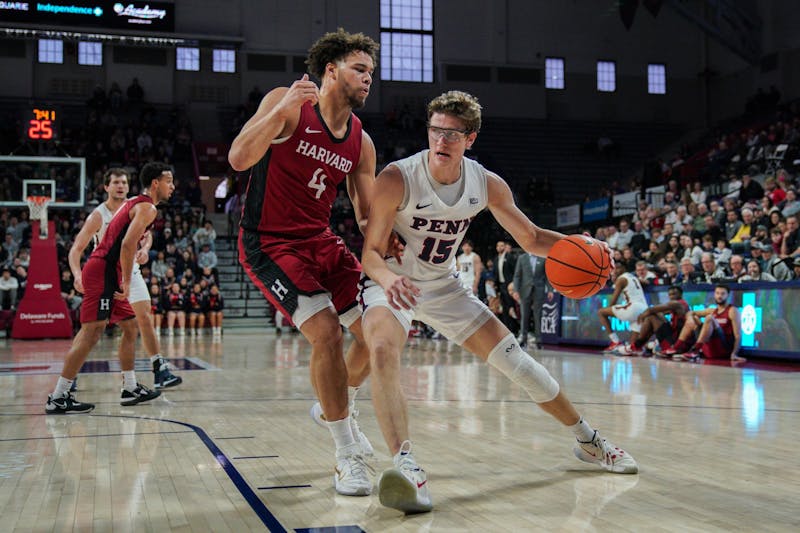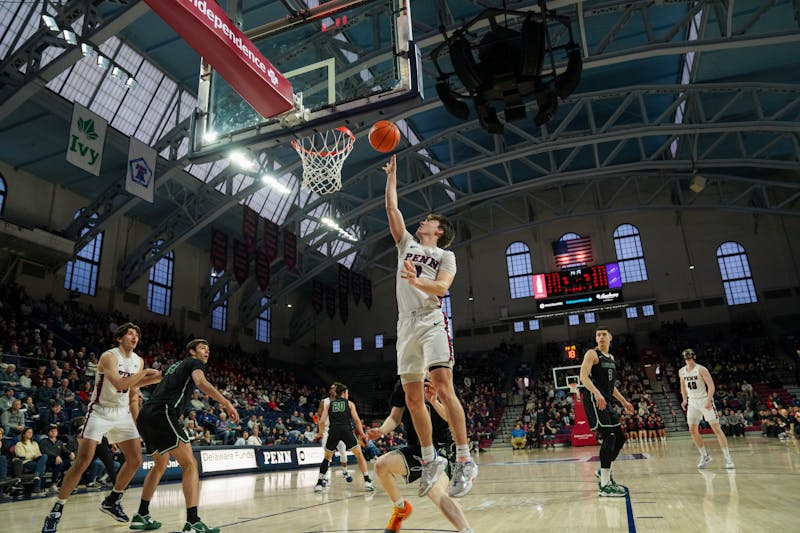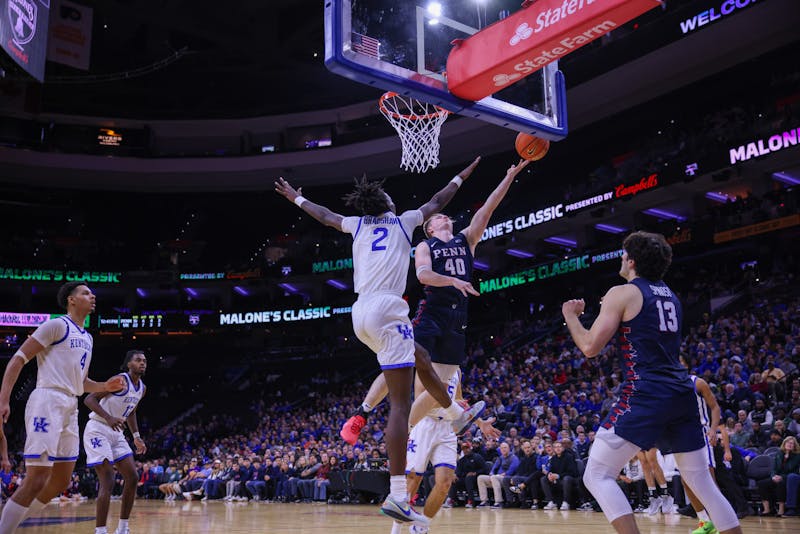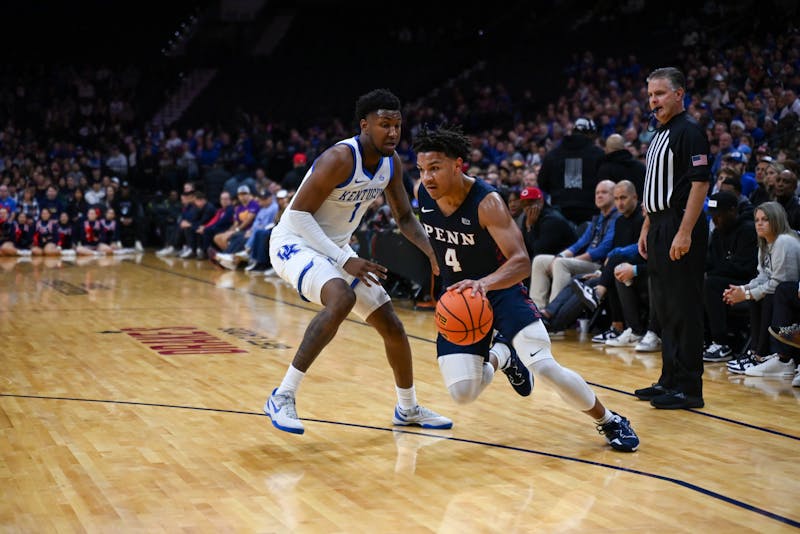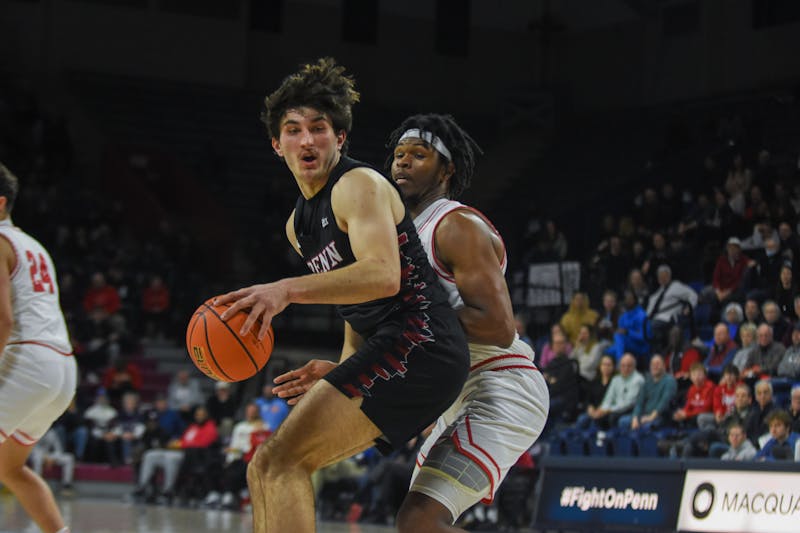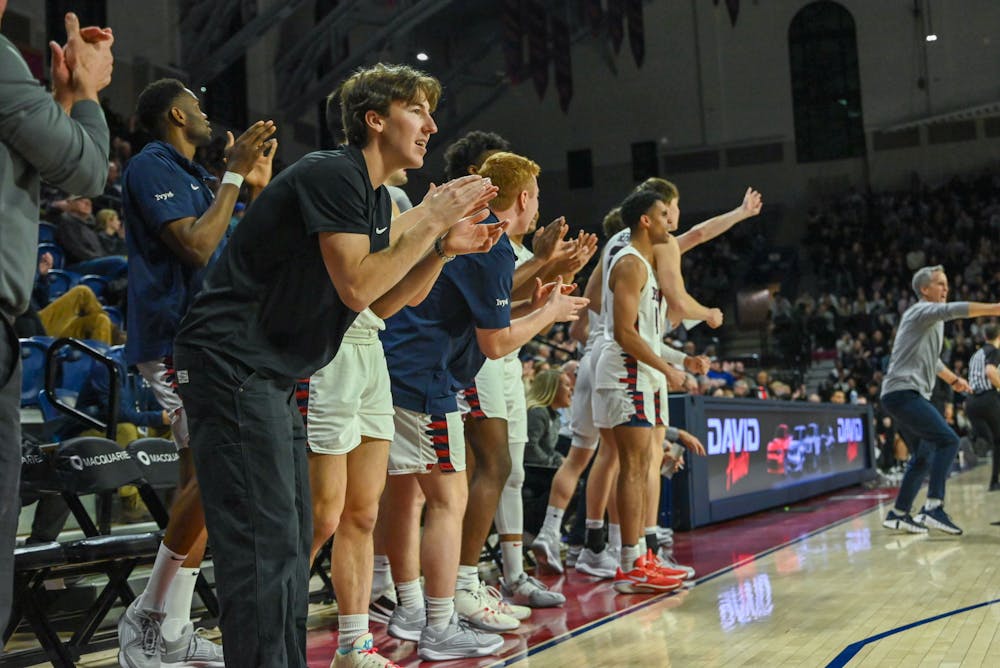
Senior guard Clark Slajchert cheers from the sideline against Harvard on Jan. 20.
Credit: Jon WongPenn men's basketball's loss to Harvard exposed myriad issues for the Red and Blue, many of which their leading scorer may not be able to fix.
When senior guard Clark Slajchert went down in a marquee matchup against current No. 5 Houston after playing just six minutes, it seemed that his injury, while unideal, came at the best possible time. With a nonconference game against No. 13 Auburn waiting in the wings before starting Ivy League Play, Slajchert would have a week to heal up before the Ancient Eight opener against Dartmouth.
But as it stands three weeks after the injury, Penn (9-9) remains without their top scorer and ball handler, and sit in fifth in the Ivy League with a conference record of 1-2. The season is far from over, but as the great Yogi Berra once said, it gets late early out there.
“This league is really about toughness,” coach Steve Donahue said. “Everyone knows each other well … sometimes you got to get punched in the mouth, just understand how to go about your approach to the next game, and learn … we’re going to do that … [but] when it’s like this in a league game, with someone who’s playing as well as he has obviously would have been very helpful.”
Offensively, the Quakers’ scoring numbers have taken a significant hit without Slajchert. In their last five games, beginning with the loss in Houston, Penn is averaging a putrid 62.2 points per game, down from their 80.9 over their first 13. Bringing back a 17.4 point-per-game scorer should provide significant help in that category, as should the senior’s presence from beyond the arc.
In Saturday's loss against the Crimson, the Quakers shot 6-29 from three, compared to Harvard’s 11-27 performance. Louis Lesmond led the way for the Crimson with 5 triples. Freshman Sam Brown has been a revelation from deep with a 44.2% clip from beyond, but the efficiency and volume from Slajchert have been sorely missed.
“It’s a lot of new experiences for [freshmen] Tyler [Perkins] and Sam [Brown] … Clark has been through this,” Donahue said. “I think that’s when Clark has been missed the most, we don’t settle when shots aren’t falling.”
While the three-point problem and the leadership void could be solved in part by Slajchert’s return, which Donahue still provides no timeline on, there are some issues he may not be able to address. The Harvard loss exposed three other major holes for the Red and Blue, and Slajchert alone cannot be relied on to turn the tide for these.
Pace of Play
One stark difference between the Penn and Harvard gameplans was in the time it took to get their shots off. The Crimson let it rain early and often, with shots frequently coming with more than half the shot clock available. The Quakers, on the other hand, were using most of their 30-second shot clock on nearly every possession. While taking ill-advised shots the moment the ball crosses half-court will only lead to further troubles, Penn’s sluggish play (especially against high-octane offenses like those of Harvard and Cornell) has proven to leave them at a disadvantage, needing to force tough shots to avoid turning it over.
Paint Penetration
Especially throughout the first half, the cause of the Red and Blue playing slower than the average grandmother was their lack of penetration. Brown, Perkins, and others spent precious seconds swinging the ball around the perimeter for much of their possessions. Dribble drives were few and far between, and when the ball was thrown inside to junior forward Nick Spinoso, he did precious little against Harvard’s Chisom Okpara. Slajchert has his share of rim-runs, but adding another perimeter-focused player won’t be enough to change the Quakers' struggles at the rim.
Big Man Defense
Spinoso is a formidable threat offensively, with a point-forward skillset that makes him a reliable ball handler in the half-court. However, in a conference laden with elite big men, such as Harvard's Okpara, Princeton’s Caden Pierce, and Yale’s Danny Wolf, the Port Washington native’s inability to lock down the interior on his own means trouble going forward. In year's past, the Quakers turned to former forward Max Lorca-Lloyd to stymie opposing bigs, but with him gone and graduated, Spinoso has struggled. Slajchert, listed at a lanky 6-foot-1, 170 pounds, is unlikely to be a difference-maker in paint protection when he returns.
The Ivy League gauntlet won’t get any easier for the Red and Blue, with another date in Cambridge, along with two games each against Princeton and Yale, the current conference leaders. The Quakers have a long way to go before becoming a threat to win — or make — Ivy Madness and potentially earn a tournament bid come March, with or without Slajchert.
LUCAS MILGRIM is a freshman deputy sports editor studying Biology from Long Island, N.Y. All comments should be directed to dpsports@thedp.com.
The Daily Pennsylvanian is an independent, student-run newspaper. Please consider making a donation to support the coverage that shapes the University. Your generosity ensures a future of strong journalism at Penn.
Donate







